
The Travails of Displaying a Single Image
One of the biggest challenges in photography is knowing what to display.
This is particularly a problem for wildlife photographers whose cameras shoot like machine guns, resulting in hundreds, sometimes thousands of photos, many of which are fantastic. How can one restrict the number of photos presented?

Much enamored with their work, photographers have trouble exercising restraint. They display numerous versions of the same image, diluting the impact of each individual shot.
Choosing just a single photo from among many takes an enormous psychological effort. If accomplished, it can have a powerful impact with the right selection.
I had such a situation recently where a solo shot I captured, that of a great blue heron seemingly walking on water, received a huge positive reaction. Here is the story of how it came about.
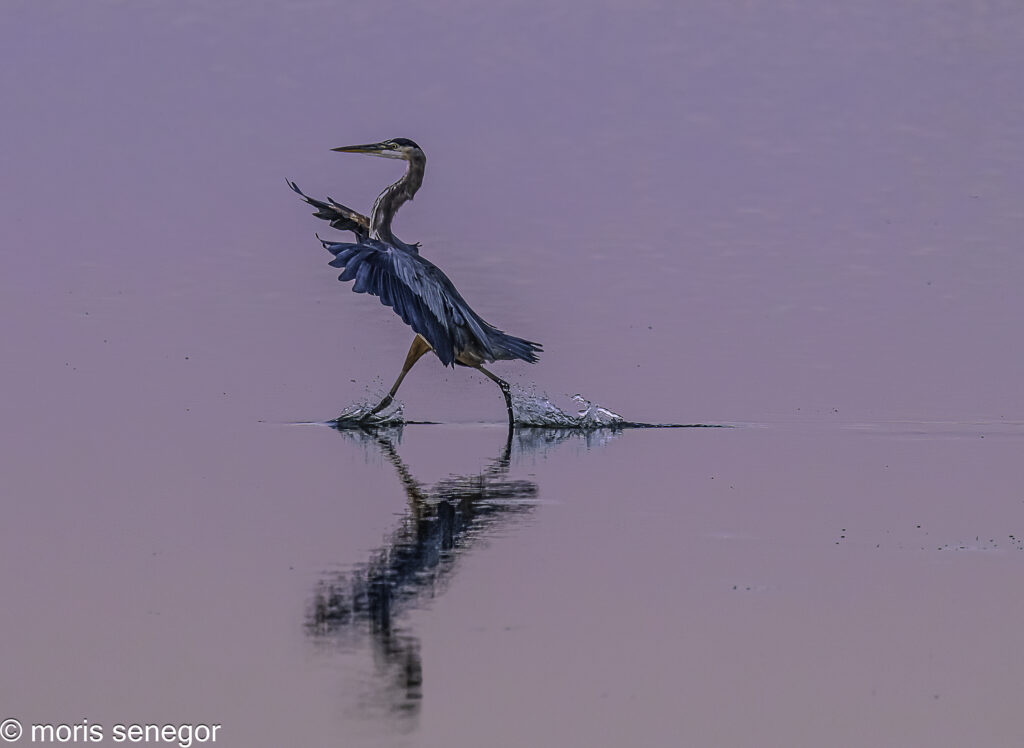
When I set out for a sunset shoot in a nearby wetland, my goal was to capture ibises in flight. They were there but far away and not very active, feeding with their beaks dipped in the water. Totally uninteresting.
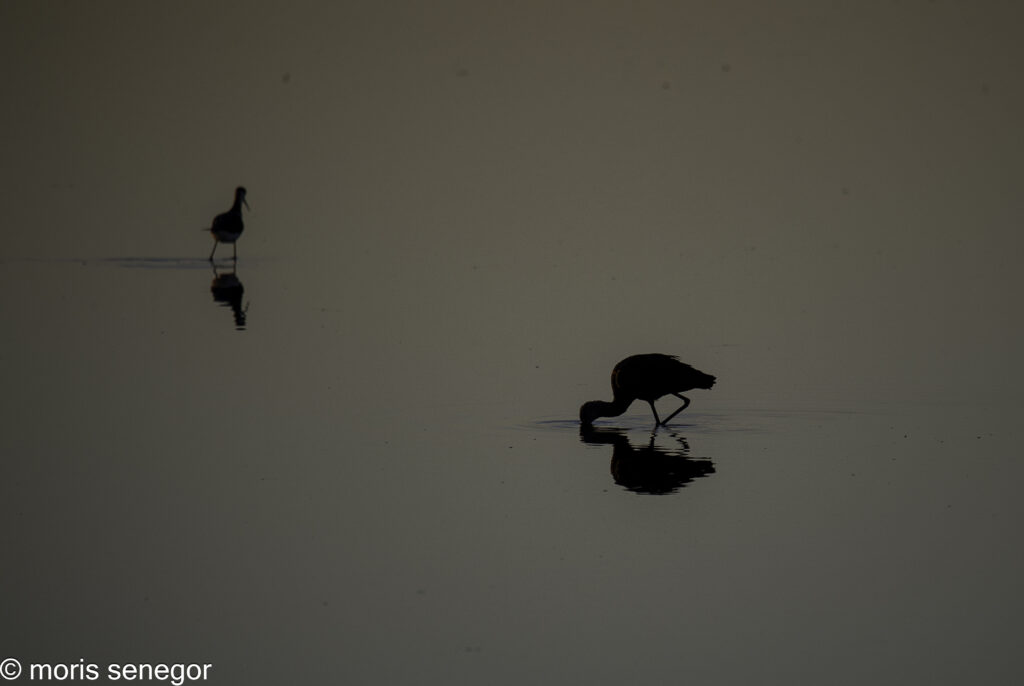
There was only one bird that attracted attention, a great blue heron that I knew well. I had photographed it on prior occasions. This time it mostly stood on the water, occasionally wading a few steps. It kept staring at me from around fifty yards away.
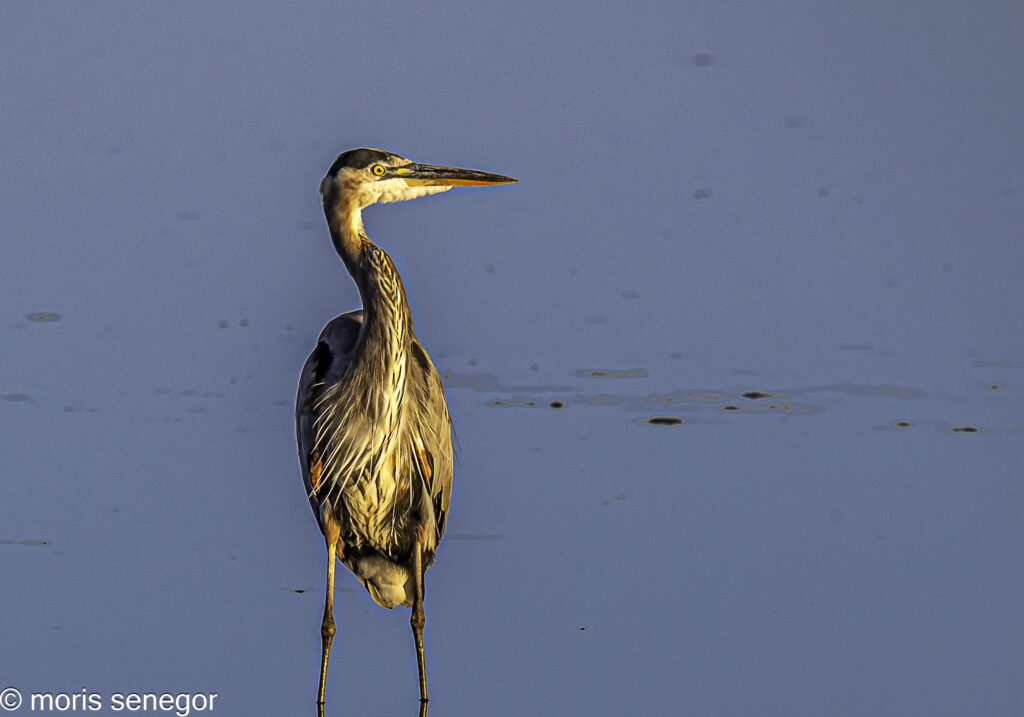
I have photographed great blue herons many times. I could not imagine any novel photo this one could offer. Nonetheless, I was committed to staying at that spot through sunset and, having nothing else to do, I decided I might as well pay attention to this bird.
It flew a couple of times, and I captured it in flight. I was facing east with the setting sun behind me. The photos were good, sharp and well magnified by the 600 mm lens, the normally bluish bird reflecting the warm orange hues of the low sun.
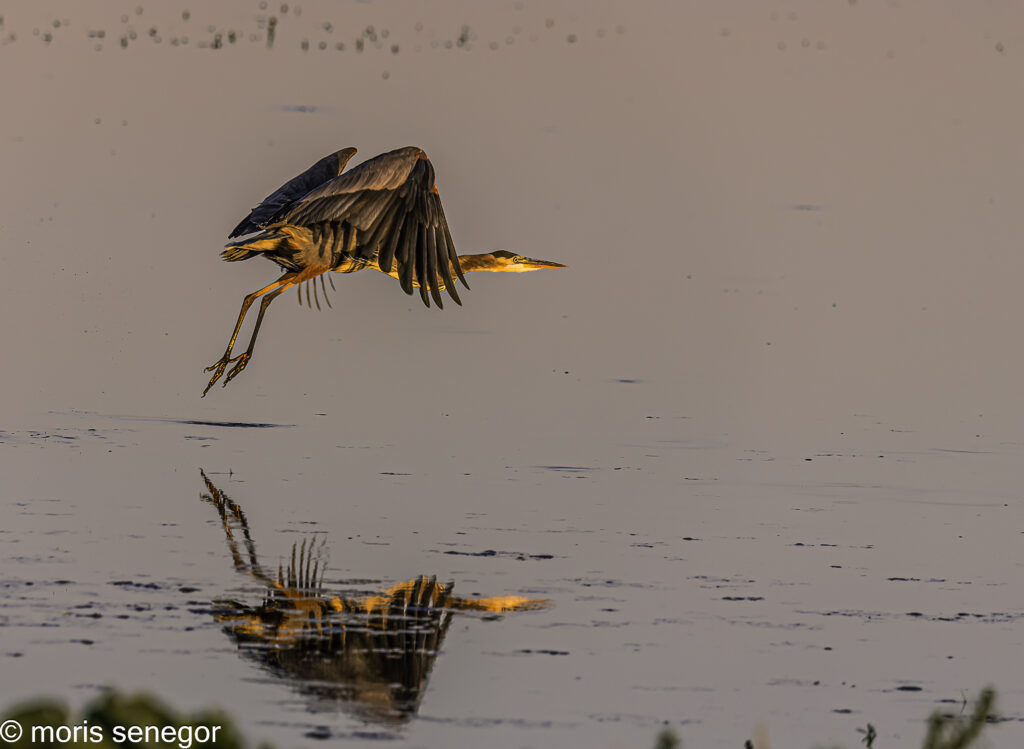
Soon the sun disappeared and with that so did my hopes. The ibises were still far away, still feeding.
In the meanwhile, my heron was slowly wading in calm water that now reflected the blues and purples of the eastern sky after sunset. I waited for one more flight.
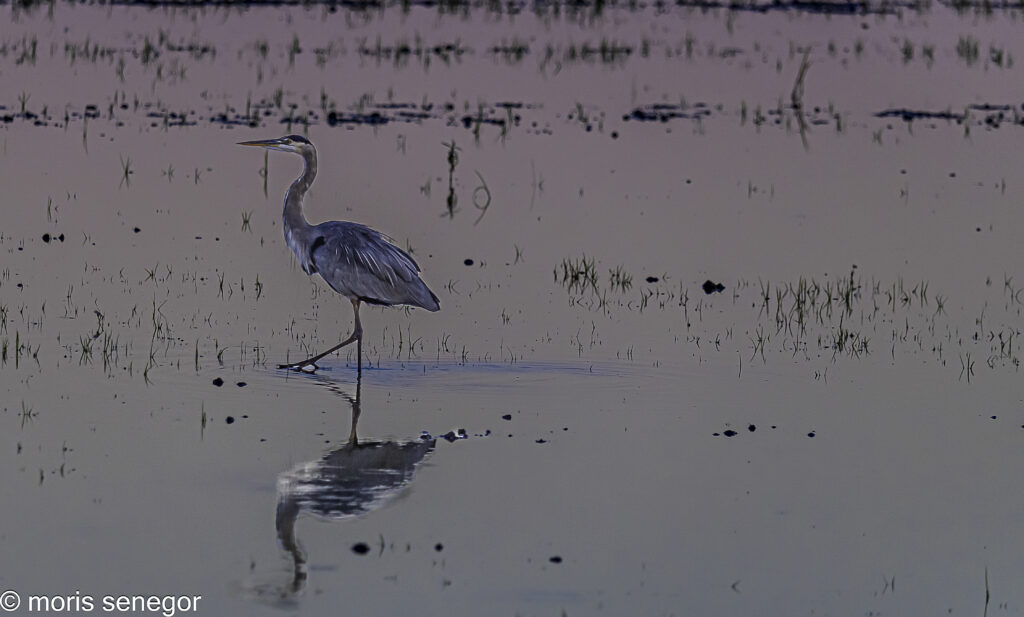
It took off so suddenly that I was unable to capture it. But I did get a series of shots as it landed.
I returned home disappointed with a fruitless shoot. Nevertheless, I uploaded the heron onto my computer and processed the photos.
Wouldn’t you know it? The shots were good, the final landing sequence truly stunning.
There wasn’t much processing required. A few tonal adjustments and one more trick I often use with sunrises and sunsets: color grading.
This feature in Lightroom allows manipulation of color tints to create subtle, vivid or contrasting looks. Color grading is like putting spice in food. It has to be done sparingly, otherwise it spoils the entire photo, giving it an unrealistic, overly made-up feel. I applied a tiny amount of color grade at the border between the blues and reds.
The result was a watercolor like effect, the photos looking dreamy, as in a painting. I had six good shots of the landing sequence, each in the same style. I could have displayed the entire sequence as most photographers do, and it would have been okay.
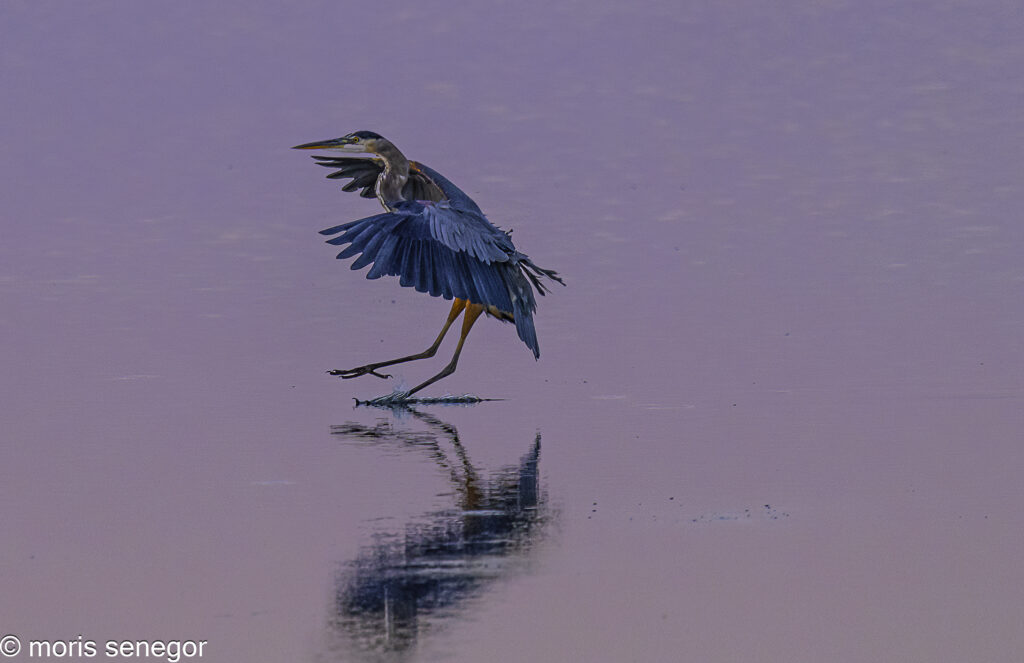
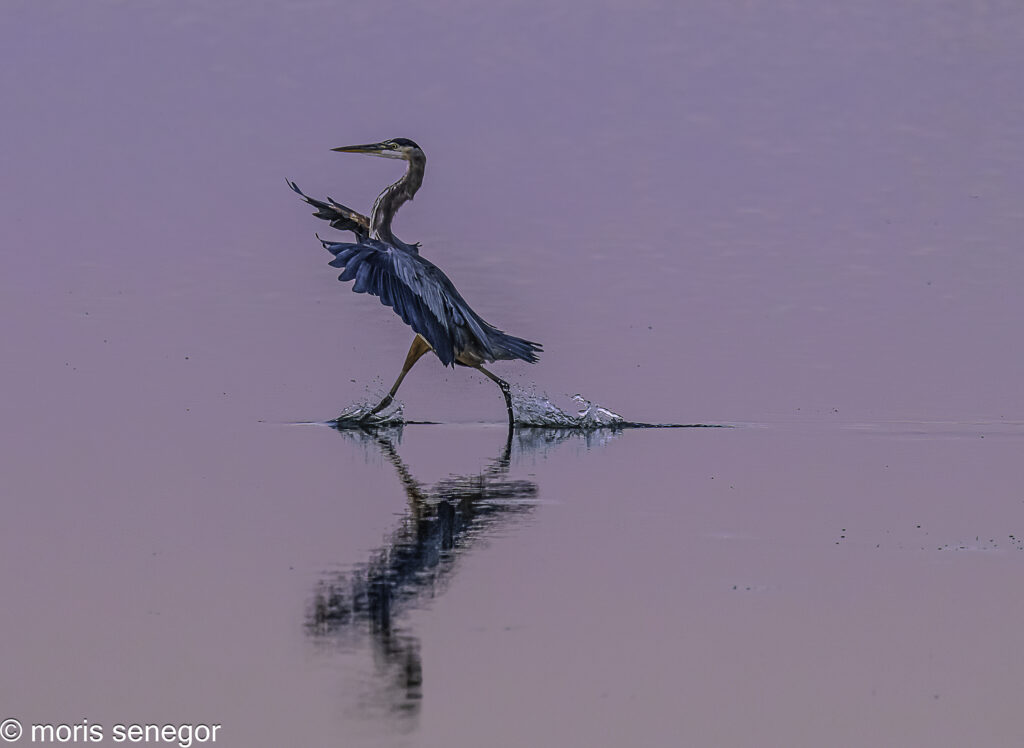
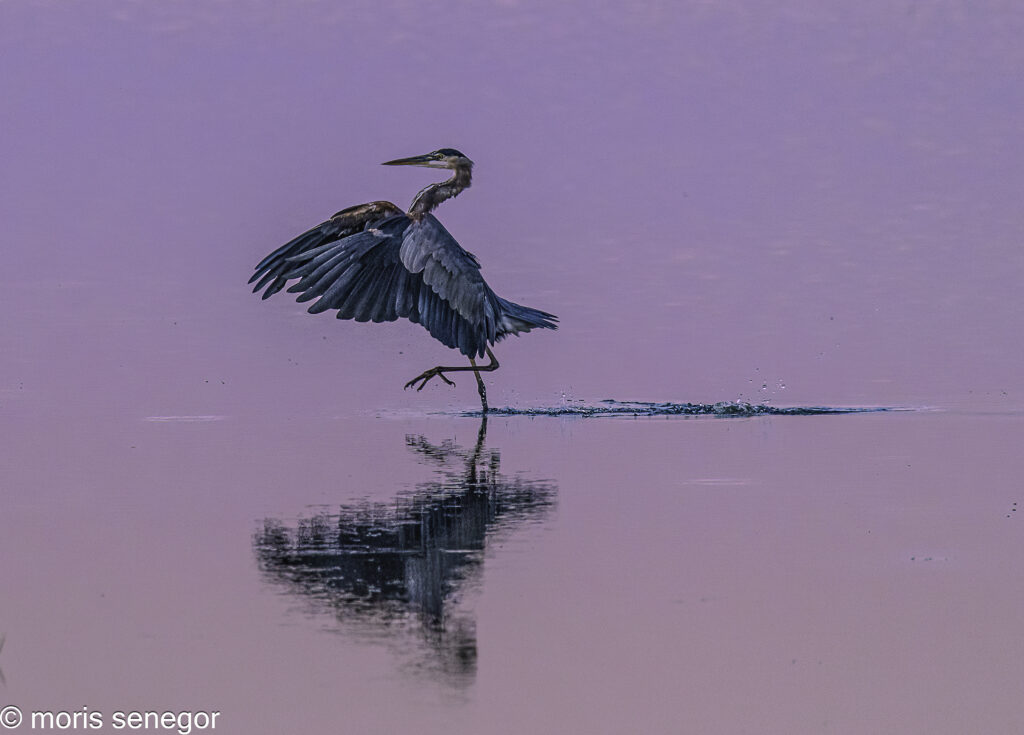
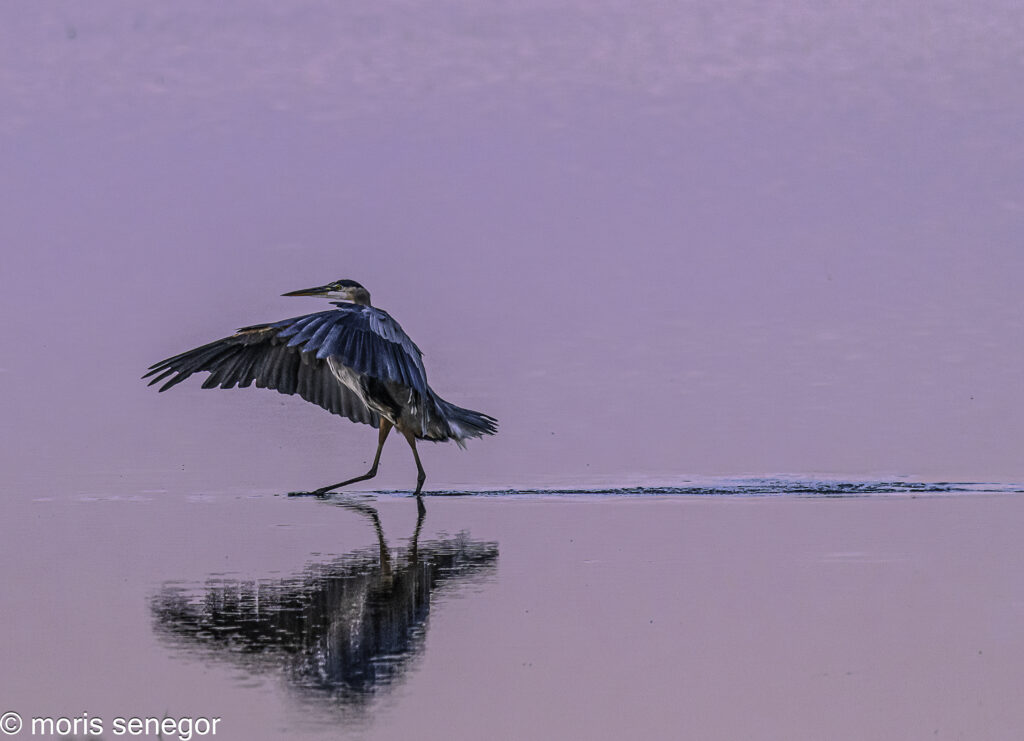
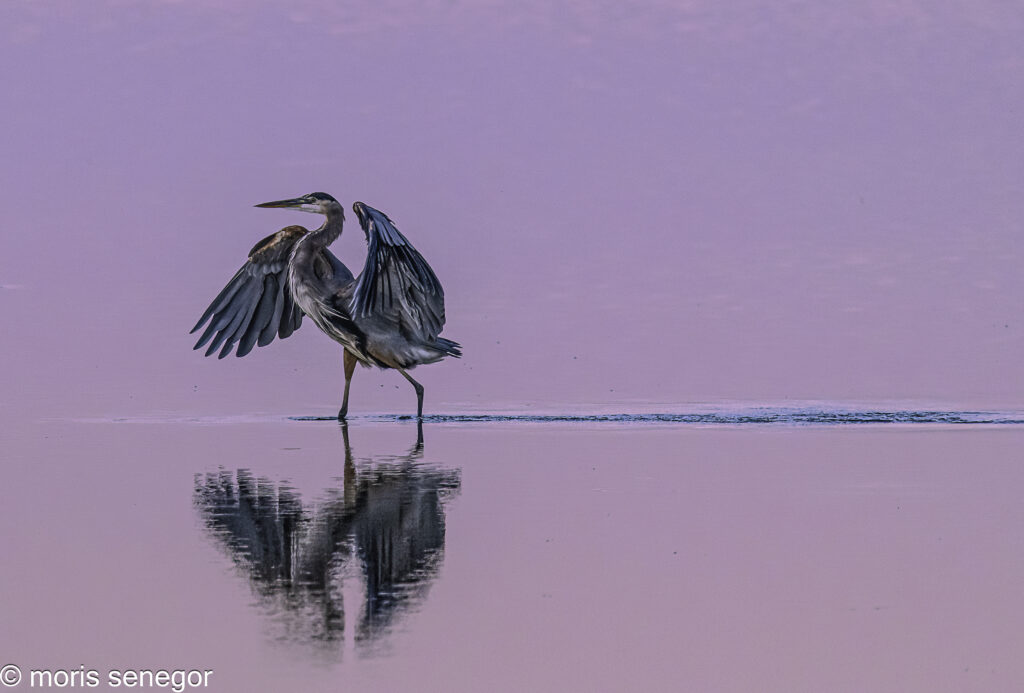
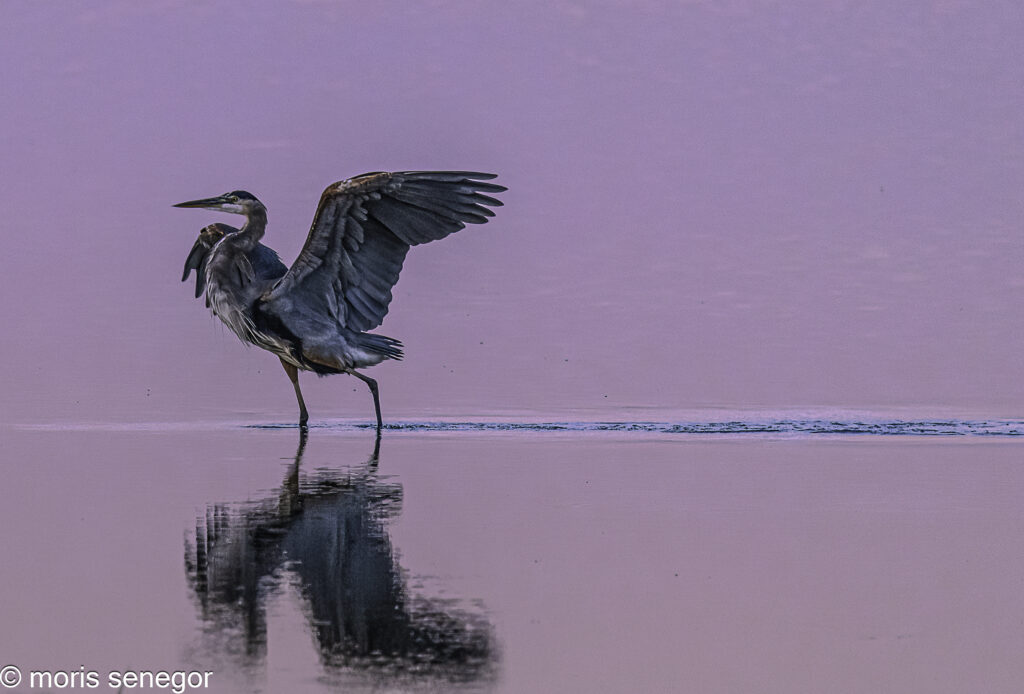
But I only chose the second shot where the bird looked like it was walking on water, like a ballet dancer. The photo wowed me when I first processed it and later, when I compared it with the others in the sequence.
LESSONS LEARNED:
Wildlife is unpredictable. It doesn’t always deliver what you expect. I went for ibises; instead, got an amazing shot of a heron. As I always say, In wildlife you don’t get what you set out for; you get what you get.
You should never disparage the photos you took because they did not adhere to your plan. Never discard originals without checking them in a large screen. Who knows, there may be some gems in there.
Try harder to display just one shot. Go with your guts for the right choice. The one that wows you the most will likely be the one that wows the viewer.
I criticize photographers for lack of restraint in their displays, but I am right there with them. I too post more than I should. On this occasion I held back, and it paid off.
And now the irony. I had to write this blog and show them all.










